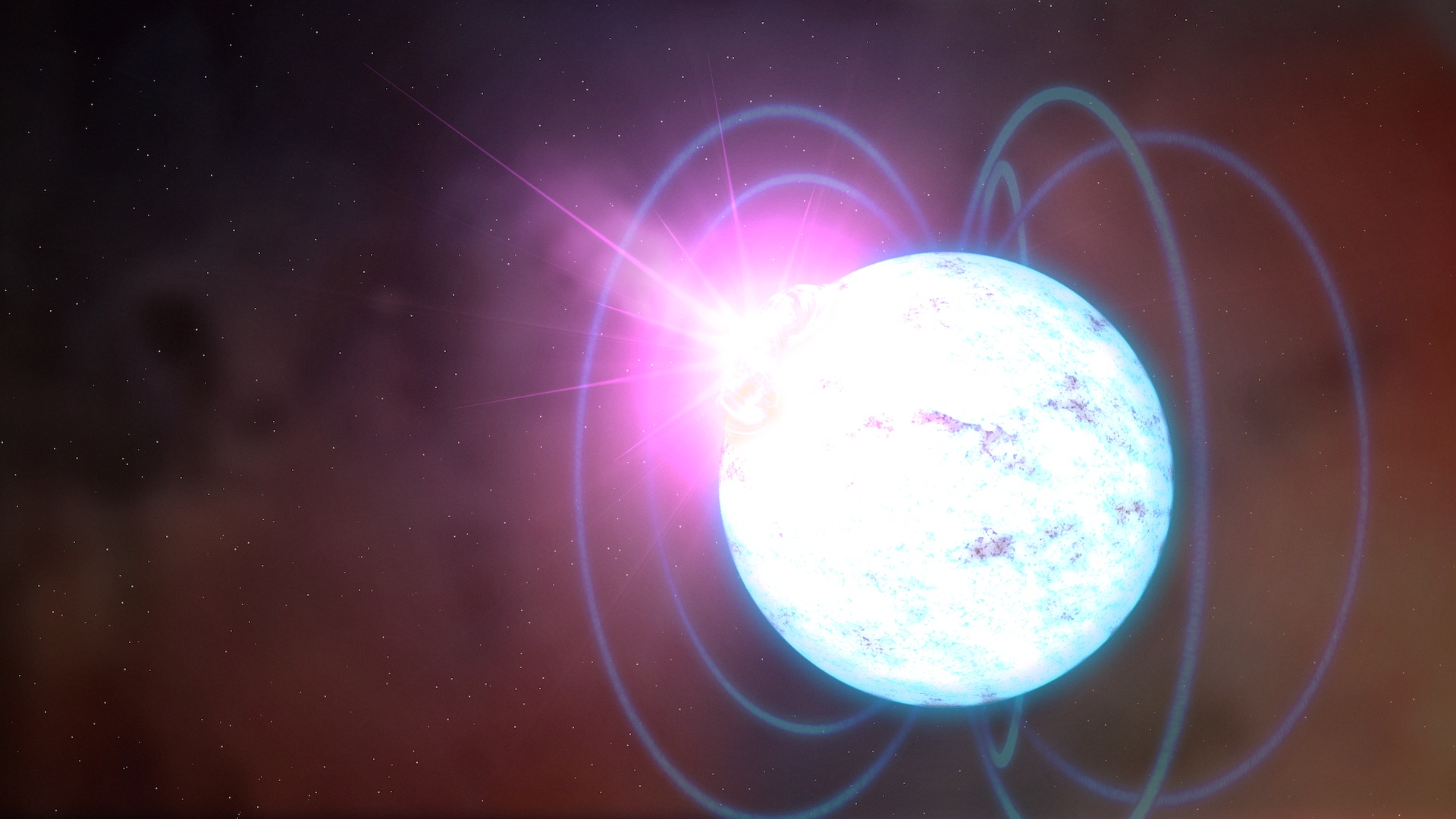By Kristen Mitchell
George Washington University scientists have detected the first example of a cloud of high-energy particles surrounding an ultra rare star about 13,000 light years from Earth—a discovery, one of the researchers said, that helps to unlock the mystery of how the star and others like it are born.
Using data from the European Space Agency's XMM-Newton spacecraft, scientists led by Geroge Younes, a GW postdoctoral researcher in the Department of Physics, discovered a "wind nebula” surrounding an ultra-magnetic neutron star, known as a magnetar.
The star, J1834.9-0846, is roughly the size of Manhattan and was discovered by NASA’s Swift satellite in 2011 following an X-ray burst. After identifying an unusual lopsided glow about 15 light years across centered on the magnetar, Dr. Younes and his team followed up with additional observations in March and October 2014. From those observations the team confirmed this glow was a wind nebula.
The finding sheds light onto the properties and environment that created the magnetar, which has largely been a mystery.
“Sure enough it turns out it has a very beautiful structure around it that looks very much like a wind nebula,” he said. “It tells us something about [the star’s] historical activity.”
A paper describing the analysis, co-authored by GW physics Professors Chryssa Kouveliotou, Oleg Kargaltsev, and Alexander van der Horst, will be published in The Astrophysical Journal.
A neutron star is the crushed core of a massive star that ran out of fuel, collapsed under its own weight and exploded as a supernova. A teaspoon full of matter from that neutron star would weigh about a billion tons on Earth.
Up until now, wind nebulae have only been seen around young neutron stars called pulsars. Magnetars are an extreme manifestation of pulsars and are exceedingly rare. Of the 2,600 known neutron stars, only 29 of those have been classified as magnetars.
Neutron stars typically possess magnetic fields 100 billion to 10 trillion times stronger than Earth's. Magnetar fields can be a thousand times stronger still, and scientists don't know how they are created.
Pulsars produce jetted radio, visible light, X-rays and gamma rays on or near their surfaces. These emissions can be detected by scientists on Earth when these jets cross our line of sight.
When a pulsar forms, the shell of the supernova acts as a bottle, containing all the particle fluxes and preventing them from flowing freely into space. This creates a wind nebula. Over a few thousand years that shell expands too far and becomes weak, unable to hold in the particles. That is why scientists don’t see more mature pulsars with wind nebula, according to NASA.
The most famous wind nebula is powered by a pulsar less than 1,000 years old. It is located 6,523 light years away and lies at the center of the Crab Nebula supernova remnant in the Taurus constellation.
The extreme densities that exist in the magnetar’s environment cannot be recreated on Earth. Researchers are interested in the way matter behaves under these conditions, hence, magnetars are their laboratories, Dr. Younes said.
“If these sources were close to Earth, that would have been devastating for life on Earth,” Dr. Younes said. “Luckily they are very far away.”
Dr. Kouveliotou said the big question now is why is this star the only magnetar with a wind nebula.
“We do not know why we don’t see a nebula around every magnetar” she said. “We could hypothesize that other environments are not as rich, as we know that this particular source is in the middle of a plethora of high energy sources.”
Researchers hope an answer to that question would help them understand what makes a magnetar and what makes an ordinary pulsar.
Dr. Kouveliotou and Dr. Younes plan to look for wind nebulae in other active magnetars and hope to be able to determine the evolutionary tracts between the different kinds of neutron stars.
“We’re trying to find what might link pulsars and magnetars,” Dr. Kouveliotou said.


